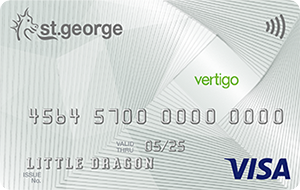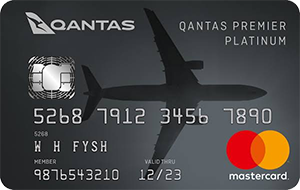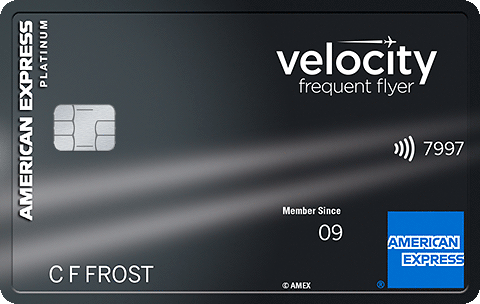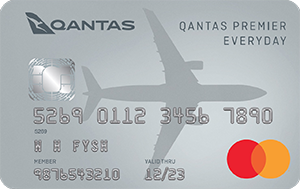
Hi, I’m a personal finance expert who loves to help you out! I’ll answer your question within a business day. Pinky swear.

Impossible as it may seem, there are now only two weeks until Christmas. Yep, that’s only 13 shopping days – or 312 online shopping hours – until Christmas Day. It’s at this point in the Christmas countdown that people usually fall into one of two categories.
Then there is the laid-back shopper. These guys prefer to leave everything to the last minute. As a result, the space under their tree is likely looking somewhat bare – if their tree is up at all.
If you fall into the latter category, whether by choice or simply because Christmas has gone and snuck up on you again, don’t panic. There is still plenty of time to get everything done.
And, you may be glad to hear that leaving everything to the eleventh hour can have its benefits. If you’re planning on putting Christmas on your credit card (responsibly, of course), you still have the opportunity to earn rewards on your spending to help cover the cost of next Christmas.
Or perhaps, cover the cost of a post-Christmas holiday to help you recover from all that festive stress shopping.
In this post, we’re going to look at the various steps you can take to maximise your rewards earning potential this Christmas – and into the new year. From finding the right card to choosing the right reward, we’ll cover all you need to know so you can start reaping the rewards from your rewards credit card before you start your flexing that plastic on festive spending.

Step 1. Assess Your Spending Style
Before you even think about using a rewards card, you need to assess your spending style. This will help you to determine whether the card you have is the right card for you, or whether you need to apply for a new card that will offer more rewards for the way you use it.
Start by looking at how much you spend and where. Do you use your card every day? Or do you only use it for emergency spending? How much do you spend each year? Do you spend a lot within certain categories, such as supermarket spending, fuel or travel?
From there, you can start to think about where you could use your credit card more. Beyond your big Christmas shop, pay attention to all those little everyday purchases where you could use your credit card instead of cash or a debit card. You could also use your card to cover other expenses such as streaming subscriptions, your gym membership, and your phone bill and utility bills.
| TIP: While channelling more spending through your credit card could see you earning more rewards, it is crucial that you not only track that spending to ensure it remains affordable, but that you pay off your balance in full each month to avoid interest accruing. |

Rewards cards do not reward cardholders who carry a balance. If this is you, you will either need to change the way you manage your card, or switch to a low rate card that doesn’t offer rewards.
Now you know how much you will spend on your card – both in the short term over Christmas, and in the long term into the new year – it’s time to work out whether the card you currently have will offer value in terms of the rewards you could earn on your spending.
- Start with the annual fee. How much do you pay each year?
- Now work out what your spend equates to in points.
- With that points total in mind, calculate the dollar value of the reward you could redeem those points for.
- Compare the reward’s dollar value with your annual fee to determine the card’s value.
Doing this should help you figure out whether your rewards card is worth keeping – or if it’s time to trade it in for a newer model.
Time for a new card? The next three steps are essential reading.

Step 2. Choose Your Program
When it comes to credit card rewards in Australia, there are plenty of programs to choose from. As each one has something different to offer, there is no program that can be deemed ‘best’. Instead, you have to find the rewards program that is best for you.
While it can take time to research the various rewards programs out there, doing this should help you find the one that best matches your spending style. This is the program that not only allows you to earn the most points, but get the most back on rewards you actually want to use.
To get you started, check out some of our Rewards Guides covering options such as the Qantas Frequent Flyer program, Westpac’s Altitude Rewards program, and the Amplify Rewards program offered by St.George, Bank of Melbourne and BankSA.
There are, of course, other programs to look into as well, including Virgin’s Velocity and supermarket favourites Woolworths Rewards and flybuys, and Citi’s Citi Rewards Program. Many banks also offer their own rewards program, including CommBank, ANZ, NAB, and the behemoth that is American Express.
As you look at each option, consider how easy it is to earn rewards, and whether your credit card spending would benefit. Also look at the rewards on offer, taking into account the value of the rewards you are interested in, and whether you would actually use them.
Q. Should you earn on more than one rewards program?
A. That really depends on your dedication to making it work. It’s no secret credit card rewards programs are not as rewarding as they once were. If you want to make your rewards card worth having, you need to put in the effort to not only choose the right card, but keep on top of offers and everyday spending to get back more from your card than you put in.
With that being said, to make the most of their spending, dedicated rewards enthusiasts tend to have more than one rewards card on the go at any one time. According to a survey completed by Points Hacks earlier this year, 86% of the site’s users said they belonged to at least two rewards programs, while 61% said they belonged to at least three.
Q. Do cashback or traditional rewards offer better value?
A. Again, this will depend on how you use the card. In Australia, you will usually find limits placed on the amount of cashback you can earn. Lower level spenders may enjoy the simplicity of cashback programs, as they earn more back on their spending than they pay out in annual fees. Bigger spenders, on the other hand, may not see sufficient value with those limits in place.
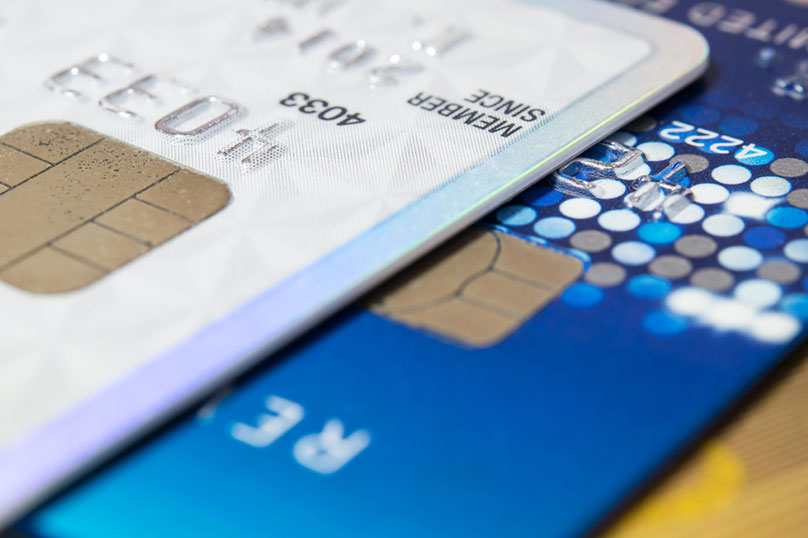
Step 3. Compare Cards
With your chosen rewards program in mind, you will now have to determine the value of that program in terms of the credit card you will use to earn points. After all, being a member won’t mean much if you can’t earn points with ease – and the points you earn don’t offer value.
Which is why the next step looks at how to compare cards.
Earn Rate
A card’s earn rate will tell you how many points you will earn for each dollar you spend. This could be a flat rate on all spending, at say 1 point per $1, or it could be tiered. With a tiered earn rate, you could earn 3 points per $1 spent at supermarkets, 2 points per $1 spent on fuel, and 1 point per $1 on all other spending.
Points aficionados aim for an earn rate of at least 0.75 points per $1 on standard cards, and at least 1.5 points per $1 on American Express cards.
| TIP: Some cards offer higher earn rates on overseas spending. With these cards, be aware of the foreign currency fee placed on this type of transaction, as you might find you pay out more in fees than you get back in points value. |
Premium Card Earn Rates
You will usually find that premium cards, such as platinum and black cards tend to offer higher earn rates than classic cards. While it may seem like a good idea to choose the card with the highest earn rate, it’s worth remembering that premium cards typically have higher annual fees. That means you will need a higher annual spend to make paying that annual fee worthwhile.
Points Caps
Some rewards cards place a cap on the number of points you can earn per month or per year. This cap can be soft or hard, depending on the card. With a soft points cap, you may earn a lower earn rate on any spending after you reach a certain point. With a hard points cap, you will no longer earn points after reaching that limit. If you have a bigger spend, points caps are particularly important.
Points Expiry
The points you earn will only remain in your account for a certain period of time. If you don’t use them, they will expire. While the lockdown and resulting travel bans have led some programs to extend their points expiry over this period, the following is the standard expiry period for each program.
- Qantas Points expire after 18 months of inactivity.
- Velocity Points expire after 24 months of inactivity.
- Air New Zealand Airpoints expire after 4 years of inactivity. Points don’t expire for Gold and Elite members.
- American Airlines AAdvantage miles expire after 3 years of inactivity.
- Cathay Pacific Asia Miles expire after 3 years of inactivity.
- Delta SkyMiles don’t expire.
- Emirates Skywards miles expire after 3 years from the date of travel.
- Etihad Guest miles expire after 2 years from the date they’re earned for standard members, after 2.5 years for Silver members, and after 3 years for Gold and Platinum members.
- Malaysia Airlines Enrich miles expire after 3 years of inactivity.
- Singapore KrisFlyer miles expire after 3 years of inactivity.
Annual Fee
As we mentioned before, it’s important to compare the card’s annual fee to the dollar value of the rewards you earn using it. If you earn less in rewards than you pay out in annual fees, then it’s not worth keeping. Keep an eye out for cards that offer free additional cardholders, as this could help you earn points faster on your additional cardholder spend.
Companion Cards
While it’s not as common as it once was, some cards come with a companion card that offers a typically higher earn rate. As an example, you may have a Mastercard that earns 1 point per $1 and a co-branded American Express or Diners card that earns 2 points per $1. While these cards can increase your earning potential, be aware of additional fees that come with paying with the higher earning cards.
Features
Additional features, such as airport lounge access and travel insurance can increase the potential value on a rewards card. While it’s important to weigh the value of these features when comparing your options, make sure the features will be of use to you.
Business Use
Bear in mind that as a sole trader or business owner, you have the option to use a business rewards card to earn rewards on your business spending. This can boost your annual earn, as both you and your employees spend day to day.

Step 4. Opt For An Intro Offer
As you may have noticed, we talk about value a lot here in the world of rewards. But, while finding a card that offers great value on everyday spending is the goal, you can boost a card’s value with the right introductory offer.
A bonus points offer can be especially handy at Christmas. Not only will your Christmas spending go towards meeting the offer’s minimum spend requirements, the points boost the offer provides can go a long way towards your goal of covering Christmas next year, or even post-Christmas travel.
On our dedicated page, you can find a huge range of cards with bonus points introductory offers, with hundreds of thousands points ready to be snapped up. While these offers extend within each of the rewards programs, here are some of the highlights within the range earning Qantas Points.
Within the range of premium Qantas Point earners, you could get your hands on 120,000 to 130,000 Qantas Points when you apply for the ANZ Frequent Flyer Black Card or the Westpac Altitude Qantas Black Card, or 120,000 Qantas Points with the NAB Qantas Rewards Signature Card.
Obviously, offers that big don’t come for free.
- With the ANZ card, your annual fee is $425, and you must spend $3,000 on the card in the first three months. Alongside the bonus points, you also get $200 credited back onto your card.
- With the Westpac card, you have a $295 annual fee to cover – and some small print to deal with. You must spend $4,000 in 90 days from card approval to earn the first 90,000 bonus Qantas Points, then you get an additional 30,000 points after making one eligible purchase in the second year of your card account being active.
- With the NAB card, you have standard annual fee of $420. To benefit from the bonus points, you must spend $3,000 on the card in the first 60 days, and keep the card account open for more than 12 months.
Meanwhile, smaller spenders can benefit from smaller bonus points offers – and smaller annual fees – with offers like these.
- With the Coles No Annual Fee Mastercard, you can earn 1 Flybuys point per $2 and add up to 4 additional cardholders for free. This card has no annual fee.
- With the Bank of Melbourne Amplify Qantas Card, you can get 75,000 bonus Qantas Points after a spend of $3,000 each month in the first three months, with an annual fee of $124 .
| TIP: Introductory offers change all the time. Check back to our page regularly to find the very best offers as and when they become available. From there, follow these rules to choose the offer that will best match you as a cardholder. |
- Check the small print to see how much you will need to spend to be eligible for the bonus points. You may need to spend a certain amount each month over a certain number of months, or a within an overall period of time.
- You may also have to keep the card account open for a certain period to be eligible. This may reduce the value of the points if you have to keep the card for more than a year, as this will mean paying two annual fees instead of just one.
- Make sure the minimum spend is affordable and that you can repay it all before it starts accruing interest.
- Consider the card’s annual fee, earn rate and other features on offer to weigh up the overall value of the offer.
- Find out when the bonus points will be credited to your account. You may find this process takes up to 12 weeks after meeting the minimum spend requirements, which could mean you wait up to six months after card approval to get your points.
- Check the eligibility requirements for the offer. You will need to be a new cardholder in most cases, with some card providers either stipulating that you cannot have had one of their cards in the past 12 months or longer.

Step 5. Start Banking Points
With your card – or cards – in hand, it’s now time to start racking up points. Here are some tips to maximise your points earn on your Christmas spending, and beyond.
Use your card to pay for anything and everything. Whether you’re at the servo filling up, paying for your weekly supermarket shop, or just buying a coffee before work, use your card for everything. Switch auto payments for bills and subscription services to your card, and consider using your card for larger purchases wherever possible. Just be sure to track that spending to stay on top of it and avoid going over your limit.
Get to know your rewards program. All that time spent researching rewards programs should stand you in good stead to make the most of the program you are now earning on. To really boost your points balance, you will need to look beyond day-to-day spending, to find out how you can earn bonus points. Check your rewards program for details on bonus points offers with program partners and other special deals that you can take advantage of.
Add your card to your mobile wallet. When you use your card via Apple Pay, Android Pay or any of the other mobile wallet options, you will earn points at the same rate as you would when using the card itself. Set your card as the default payment method so you can collect points easily as you shop in person and online.
Add an additional cardholder to your account. Most cards allow you to share your account by providing additional cardholders with their own cards. While you remain the primary cardholder – and liable for all spending – you can add your partner, eligible kids or other trusted family members to the account, and earn points faster on their additional spending. Just be aware of any additional fees that may be charged.
Be the one who covers the bill. If you’re at a restaurant with friends, out for drinks with colleagues or doing anything else where you would normally split the bill, offer to cover it with your credit card and have everyone else pay you back. This could also apply if you live in a share house and usually share the cost of bills or food, or if you’re heading off on a group holiday.
Make the most of your travel booking. Rewards programs often offer bonus points when booking with partners. But with larger programs, such as Qantas Frequent Flyer, members don’t always know who those partners are. Take time to find out which program partners you can book with to earn additional points on accommodation, car hire, tours and more.
Manage your account. Once you’ve put in all that work to boost your points balance, you don’t want to waste that effort by paying out interest and fees on your account. Keep track of your card spending by checking online banking or your app regularly, set up limit and payment reminders, and always pay your closing balance in full by the due date. You also have the option of paying down your account throughout the month if that’s easier.
Do a health check on your card. After the festivities wind down and you’ve earned big on your silly season spend and Christmas travel, do a health check on your card to make sure it will continue to offer value as you use it into the new year. This can be especially important on cards with intro offers.

Step 6. Choose The Right Reward
Before you start spending all those lovely points, it’s a good idea to research your options to get the most value from your reward. Without a doubt, travel will give you the biggest bang for your buck, either in the form of flights or upgrades. Avoid gift vouchers and other merchandise unless your points are about to expire and you have no travel plans.
So, can you cover the cost of next Christmas with the points you earn this Christmas? Of course! If you’re smart with your card and your spend is big enough. But, we would recommend you save your points for a trip next Christmas rather than splurge them on lower value rewards such as towels and toasters.
Happy shopping!
Disclaimer: The information contained within this post is general in nature and does not take into account your personal situation. You should consider whether the information is appropriate to your needs, and where appropriate, seek professional advice from a financial adviser.
Photo source: Pexels, Getty images

Pauline Hatch
Pauline is a personal finance expert at CreditCard.com.au, with 9 years in money, budgeting and property reporting under her belt. Pauline is passionate about seeing Aussies win by making their money – and their credit cards – work smarter, harder and bigger.
You might be interested in

Credit Card Types
Credit Card Fraud Statistics

Tips & Guides
Complete Guide to the Velocity Frequent Flyer Program
Recently Asked Questions
Something you need to know about this card? Ask our credit card expert a question.
Ask a question
Hi, I’m a personal finance expert who loves to help you out! I’ll answer your question within a business day. Pinky swear.


